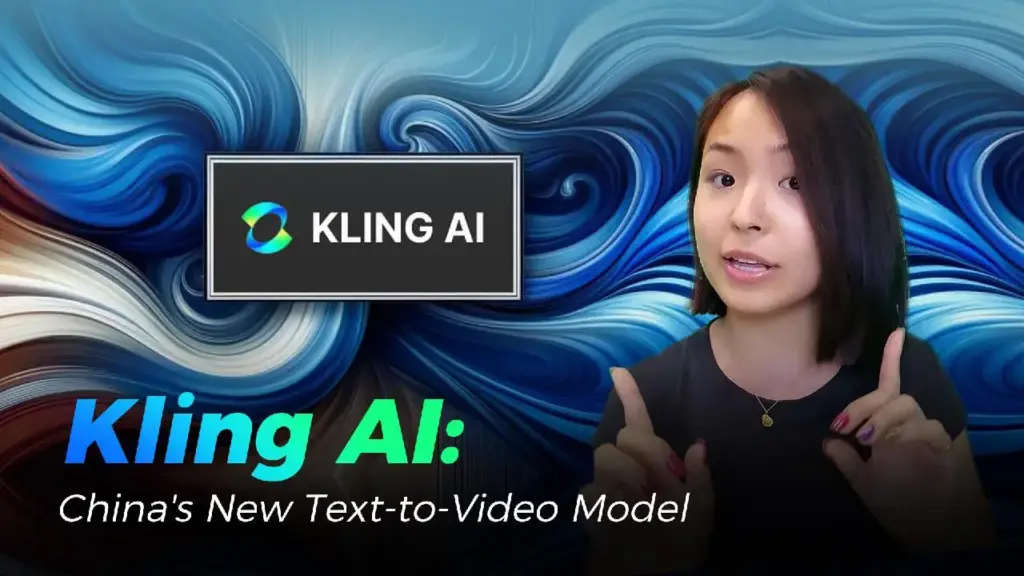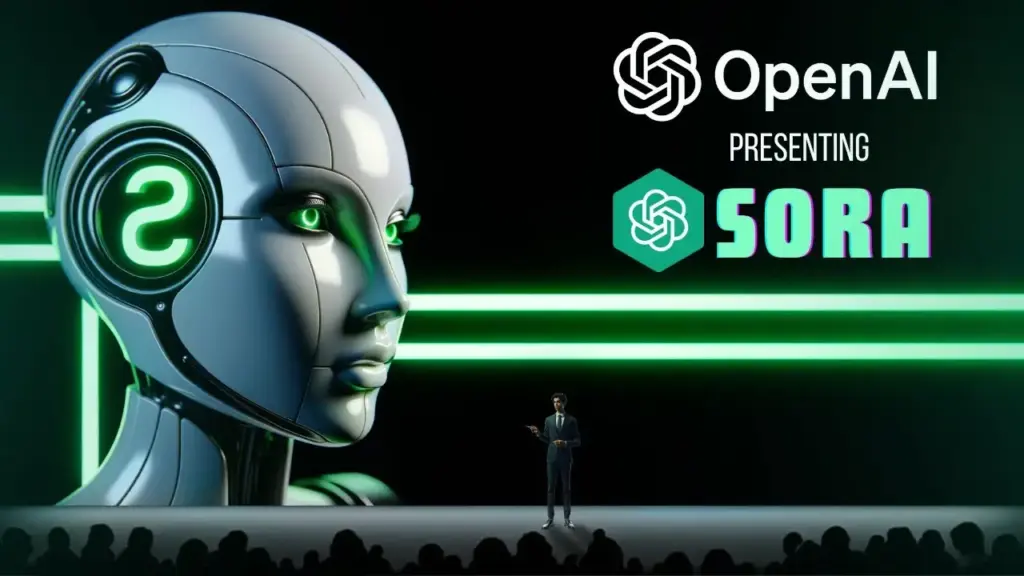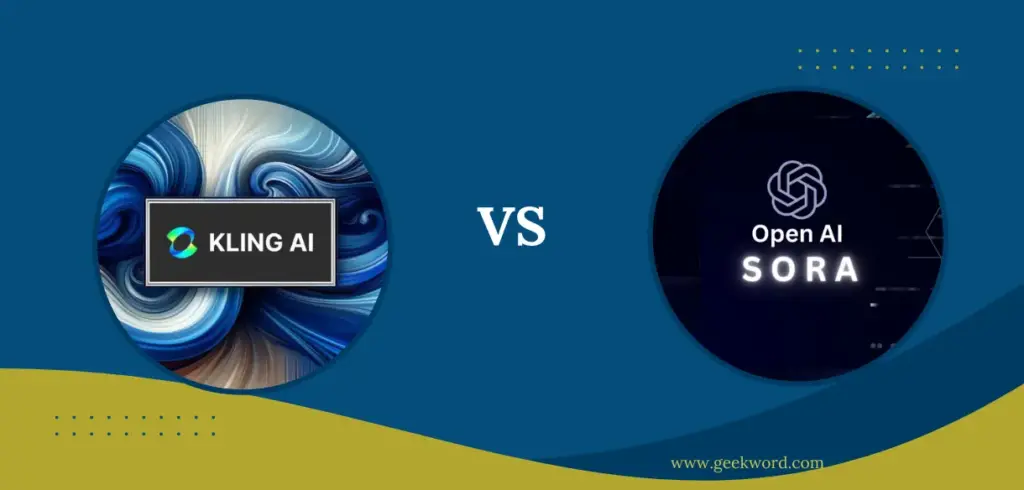In the modern world of AI proliferation, the approach used in video generation has become rather popular. The main protagonists in this sector are Kling AI and Sora AI, the former being a tool for creating Virtual Reality environments, while the latter is an Artificial Intelligence driven vocal learning platform. In this article, the writer focuses on providing a comprehensive analysis of the two AI video generators by analyzing how the two tools work, the technology applied in the gadgets, and their possible integration in various industries.
What is Kling AI?
Kling AI, a text-to-video generator developed by Kuaishou Technology, has been making waves in the AI video generation landscape. Kling AI is a next-generation video creation tool using artificial intelligence to produce polished, effective videos in outsourcing the production process. Intended to automate the creation of video, Kling AI is a deep learning model that identifies components of the visual and audio content before integrating them into coherent, well-formatted videos that will fit the context.

It is easy to use, and the primary function of getting users, no matter their level of experience in video editing, to produce a video with no fuss or hassle. Kling AI works with different types of content such as marketing videos, educational tutorials, and so more thus can be really helpful for content creators in any domain. Some of its features are fairly regarded as sophisticated and these include; automatic script writing, voice over, and compatibility with common video editing programs.
What is Sora AI?
Other effective video generation tools that are integrated with Artificial Intelligence enable Sora AI for video production. Established as a brand offering advanced machine learning solutions, Sora AI aims to support creative expression by providing tools that allow people to create near-professional videos on the go. Its strength must be said to be versatility in creating actual-like animations and nice characters, and great dynamic in depicting the videos, which makes this platform so popular among the creative community eager to give the videos fantastic look.

Sora AI also has an elaborate feature set perfect for minimizing hassles common in video production. It uses some features like real-time collaboration, many resources from libraries, and templates, which allow users to tell rich stories without the need to possess professional editing skills. The insights and analytics generated by the platform’s artificial intelligence help creators in understanding better, and adapting content to achieve improved engagement and reach.
How does Kling AI and Sora work?
Kling AI
At Kling AI, the use of both neural networks and natural language processing is relevant for video content comprehension and creation. Individuals type an annotation or choose a storyboard based on a text, and the AI processing evaluates the input and creates visuals and sounds adequate for the text. Deep learning models just have knowledge that serves as input data to generate content that fits certain style and theme.
Furthermore, Kling AI incorporates machine learning algorithms that know how users utilize the app and dynamic feedback, making Kling AI’s generated content better as it evolves. This process of developing adaptive learning helps to make the viral videos more interesting and useful for the viruses as it meets the needs of the consumers.
Sora by OpenAI is insane.
— Angry Tom (@AngryTomtweets) June 6, 2024
But KWAI just dropped a Sora-like model called KLING, and people are going crazy over it.
Here are 10 wild examples you don't want to miss:
1. A Chinese man sits at a table and eats noodles with chopstickspic.twitter.com/MIV5IP3fyQ
Sora AI
Consequently, Sora AI applies advanced computer vision, GAN as well as reinforcement learning for the production of quality video content. One of the most standout features of the platform is its GAN architecture apt for producing convincing images and animation through a significant duel of two neural network classes, one as a generator and the other as a discriminator. This catalyses conclusive and real like impacts that give cartoon like animated scenes a liveliness that almost makes them seem more real than real life shots.
Every single one of these videos is AI-generated, and if this doesn't concern you at least a little bit, nothing will
— Marques Brownlee (@MKBHD) February 15, 2024
The newest model: https://t.co/zkDWU8Be9S
(Remember Will Smith eating spaghetti? I have so many questions) pic.twitter.com/TQ44wvNlQw
Building upon the fundamentals, Sora AI’s reinforcement learning models introduce enhancements to the video generation process by reflecting on the content updates based on the response and performance feedback. This view is as a result of the fact that the above-mentioned dynamic approach guarantees the fact that the videos being produced are not only of high quality in terms of graphic work but also the best in terms of the extending periods of time which are needed to capture the attention of the target clients.
Kwai vient de lâcher une bombe dans la génération de vidéos.
— Ladji | IA Solopreneur (@Ladji_IA) June 10, 2024
Mais comment se comparent-ils à leur plus proche rival ?
Kwai : Kling vs. OpenAI : Sora
1. Une personne tapant son meilleur croc dans son hamburger. pic.twitter.com/jxCnjS0qay
Why Are AI Video generators so popular?
The automated AI video generating platform is common nowadays because of the ease of creating a video while at the same time helping to cut down on time and cost of creating a video as we known to be expensive. These tools make it easy for content producers of all sizes: from single individuals, small businesses, medium enterprises to large scale organizations to produce excellent videos without necessarily needing a lot of resources or skills. This growth is attributed to the increased demand for engaging videos in the social media, marketing, education and entertainment fields where artificial intelligence video generators serve as crucial tools in today’s digital globe.
Tech Stacks of Kling AI and Sora AI
Kling AI
The tech stack of Kling AI is mainly united with primary deep learning frameworks like TensorFlow, which are determining the functioning of neural network models. Moreover, there are also NLP libraries used for analyzing and generating texts, including spaCy and NLTK. In case real time video processing is required, Kling AI includes utilities, including OpenCV and FFmpeg libraries to perform integration with most of the existing video editing tools and achieve the accurate rendering of video material.
Sora AI
The tech stack will of Sora AI will encompass TensorFlow or Keras AI frameworks and OpenCV or Dlib computer vision libraries. In the present case, GANs are used through the PyTorch library, which is well-recognized for its flexibility during complicated neural network training. Furthermore, Sora AI makes use of reinforcement learning frameworks like OpenAI’s Gym to refine and upgrade the content creation algorithms used on its application, which can adapt to the interactions from the users as well.
The Rise of AI Video Generators
Based on the existing progression of AI video generation, and the continuous development of other domains of machine learning as well as neural networks, one can safely state that the future of AI video generation looks promising. With the development in these technologies, the AI video generator is set for a further advance where the content produced in videos will be as real as any created by a human. AI advancement will also support additional features like live-video editing, personalised content curation, and more sophisticated user engagement, changing the way content is produced and shared.
Effect on Various Industries
Conversations AI video generation are expected to revolutionalize many sectors like marketing, entertainment, education, and e-commerce. In marketing, they help in creating customized videos for prospective buyers to reach a large audience while using minimal resources hence increasing the buying rates. AI in entertainment opens new opportunities for a radical narrative approach to creating characters, plots, and even staking non-playing characters and special effects in film and other media entertainment initiatives. In education, these tools enhance the creation of the content which in turn makes education more engaging and effectively through AV. Also, AI-generated videos have improved in retail, entertainment and e-commerce mainly in presentation of products to boost its sales and customer satisfaction.
KLING vs. Sora: A Head-to-Head Comparison
When comparing Kling AI and Sora AI, several key factors come into play:
- Ease of Use: Where Kling AI stands out is that it offers a simple interface that even non-technical users are able to understand, use with ease this is in contrast with Sora AI tool, a powerful tool that may need the user to learn how it functions.
- Features: Both software provide a wide range of features that allow designers to create realistic animated characters and some other objects; but uniquely, Sora AI leads its counterpart due to the latest GAN technology. In contrast, Kling AI is especially notable for its operability with conventional video editing tools and best script-to-video workflows.
- Performance: Compared to other alternatives Sora AI available features like GANs and reinforcement learning allow it to generate highly realistic visuals also content generation is perfected through reinforcement learning based on the insights received from users. Kling AI is built with NLP and Deep Learning approaches and retains the capacity to create coherent and contextually meaningful videos.
Kling AI just launched and is already being called a 'Sora killer' with its stunning 1080p, 30fps videos. Features include realistic simulations, a 3D VAE system, and 3D face/body reconstruction. Open access with a Chinese phone number or email. Can't wait to compare it to Sora! pic.twitter.com/b9pSqwSFTx
— Jaya Talent (@JayaTalent) June 9, 2024
It's only been 5 days since KWAI introduced KLING, and the hype is unreal.
— Madni Aghadi (@hey_madni) June 12, 2024
People are already comparing it to OpenAI's Sora.
Here are 12 wild examples you can't miss:
1. Rally car pic.twitter.com/Giws2EBwo0
動画生成AI
— 津本海🥦スニフアウト CEO (@tsumotokai) June 10, 2024
Kling vs. Sora pic.twitter.com/pN6072EPZG
The Future of AI Video Generation
Thus, the concerned future of video generation can be outlined as the constant expansion of an AI-based approach along with the development of personalization and the use of creativity. The latter events make it possible to prophesy about utilizing more advanced AI models in subsequent AI video generators which will allow reaching the level of the human emotions, facial expressions, and speech intonations imitation. Third, the peripheral gadgets of AI video generation will improve as well, including higher-performance GPUs and dedicated AI chips.
Kling and Sora: A Game Changer in the Making
Sora AI and Kling AI are both promising in the field of video generation, and thus are possible game changers. They are different and have innovative solutions that help improve the process of creating content and make it more convenient, time-saving, and inventive. These technologies will remain steady and continuously develop new possibilities, that were unimaginable before, for new ideas in creation and production of videos.
Conclusion
Therefore, Kling AI and Sora AI can be characterized as leaders in video generation with AI assistance focusing on strengths that make them unique and specialized. Both Kling AI and Sora AI have taken a direction that will revolutionize video production and consumption in the future; while Kling AI is designed to be easily integrated into existing systems and interfaces, Sora AI has focused on generative natural realism. The future undoubtedly holds more groundbreaking discoveries, which solidifies the AI video generators as a necessity for creators from across the globe.
Frequently Asked Questions
What is the main difference between Kling AI and Sora AI?
Kling AI is known for its ease of use and integration with traditional video editing tools, while Sora AI excels in generating realistic animations and characters using advanced GAN technology.
Which platform is better for beginners?
Kling AI is generally considered more beginner-friendly due to its intuitive interface and straightforward video creation process.
Can I use both platforms for commercial projects?
Yes, both Kling AI and Sora AI offer features suitable for commercial use, allowing users to create professional-quality video content.
What is the role of AI video generators in content marketing?
Interactive video creation with the help of AI video generators makes the process of producing individualized and lively videos fast and effective, useful for increasing the uptake rates in content marketing strategies.
What is the future of AI video creation?
Due to the evolutionary improvements in AI models and hardware, further developments are expected to include semi-judicious, higher individualization, and higher levels of realism in AI-generated video content.

